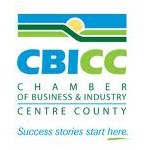The Roth 401(k) entered the retirement community in 2006. This investing innovation was created by a provision of the Economic Growth and Tax Relief Reconciliation Act of 2001. Modeled after the Roth IRA, the Roth 401(k) gives investors the opportunity to fund their accounts with after-tax money. Investors will receive no tax deduction on contributions to a Roth 401(k), but they will owe no taxes on proceeds. Participants in 403(b) plans are also eligible to participate in a Roth plan.
When an investor puts money into a Traditional IRA, he or she gets a tax deduction on the contribution. Thanks to this deduction, money that would ordinarily be lost to the taxman remains in the account, tax deferred, until withdrawn. From the investor’s perspective, it is hoped that the account will grow over time, and that the money that would have been lost to the taxman will spend all of those years working for the investor instead. The government wants those assets to grow too because the tax deferral ends when the money is withdrawn from the account. In essence, the government gives you a tax break today in the hope that there will be even more money to tax in the future.
The Roth 401(k) works in reverse. The money that you earn today is taxed today. When you put this after-tax money into your Roth 401(k), withdrawals taken after you reach age 59 1/2 will be tax-free. The prospect of tax-free money during retirement is attractive to investors. The prospect of tax dollars getting paid today instead of being deferred is attractive to the government. In fact, it’s so attractive that lawmakers have had discussions about eliminating traditional tax-deductible IRAs and replacing them with accounts such as the Roth 401(k) and Roth IRA.
Unlike the Roth IRA, which has income limitations that restrict some investors from participating, there are no such limits on the Roth 401(k). Investors have the opportunity to contribute to a Roth 401(k), a traditional 401(k), or a combination of the two. If you choose to contribute to both, you do not get to contribute twice as much money, as contribution limits remain the same regardless of whether you choose a traditional account, a Roth, or both. The contribution limit for 2009 is currently set at $16,500 for people under age 50 and $22,000 for those 50 and above.
The decision regarding which plan to choose will depend largely on your personal financial situation. If you expect to be in a higher tax bracket after retirement than you are in your working years, the Roth 401(k) may be the way to go because it will provide tax-free withdrawals when you retire. While it may seem intuitive that most investors will experience a decrease in the tax rate upon retirement, this is not necessarily so because retirees often have fewer tax deductions and the impact of future legislation could result in higher tax rates.
Another item to consider is that, unlike with Roth IRAs, Roth 401(k) participants are subject to required minimum distributions (RMDs) at age 70 ½. Also, keep in mind that assets held in a traditional 401(k) plan cannot be converted into a Roth 401(k).
Like all provisions of the Economic Growth and Tax Relief Reconciliation Act of 2001, the Roth 401(k) came with an expiration date, which provided that the ability to contribute to a Roth 401(k) would expire at the end of 2010. However, the Pension Protection Act of 2006 (PPA) made the Roth 401(k) permanent.




 Clarity Coaching Tips
Clarity Coaching Tips Common Sense Videos
Common Sense Videos It’s Your Money
It’s Your Money
